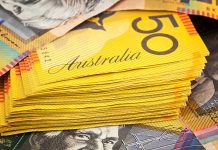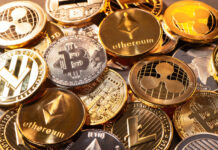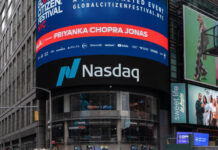Last week, investors were focused on the decision of the central banks in the United States, Great Britain, Switzerland, Japan, the Eurozone, and closely watched inflation data in European countries, Great Britain, and Canada. Following Wednesday’s FOMC meeting, the US Federal Reserve doubled the pace of reducing the quantitative easing program to $30 billion a month. At the same time, Fed officials forecast 3 rate hikes in 2022 and 3 rate hikes in 2023. On Thursday, the Bank of England unexpectedly raised its key rate to 0.25% from 0.1%. At the same time, the central bank has left the volume of the program of state bond purchase at the level of 875 billion pounds.
The European Central Bank left monetary policy unchanged but raised its inflation forecasts and lowered expectations for economic growth in 2022 because of the Omicron option. The Swiss National Bank (SNB) stayed true to its ultra-soft monetary policy, deviating from its tightening course. As for inflation, the consumer price index and the producer price index broke records in nearly all countries.
It is not surprising that more and more central banks are turning to more aggressive measures to fight inflation, from cutting stimulus programs to raising interest rates. Federal Reserve officials said on Friday that the first interest-rate hike could come as soon as March. Investors began shifting their portfolios back to the “cash,” which led to an increase in the dollar index and a decrease in the stock indices quotes.
The US stock market closed in the red area on Friday. The Financial sector fell by 2% as 10-year yields fell below 1.4% due to concerns about the impact of the Omicron strain. The Dow Jones index (US30) decreased by 1.48% (-1.65% for the week), the S&P 500 index (US500) decreased by 1.03% (-1.90% for the week), and the NASDAQ technology index (US100) lost 0.07% and became the leader of the fall for the week (-2.89%) among US indices.
A Goldman Sachs study found that the US stock market has grown very disproportionately over the past year. The giants TSLA, NVDA, GOOGL, MSFT, and AAPL showed 35% growth in the S&P 500 index. And if you look at April, they gave a total of 50%. FB and AMZN increased slightly, and the remaining 493 companies in the index traded within +-2% over the past year.
At the end of each year, the largest investment companies evaluate the prospects for markets and give forecasts for the main stock indices. JPMorgan Chase Bank predicts growth in the US stock market next year. Analysts expect the rise of the S&P 500 index (US500) to 5050 points. The potential growth from current levels is about 8%. The chief strategist of Goldman Sachs, David Kostin, expects that by the end of 2022, the S&P 500 (US500) index will rise to 5100 points (+9%) due to the continued growth of corporate earnings. Morgan Stanley expects the S&P 500 (US500) index to decline to 4,400 points over the next 12 months.
Pharmaceutical company Pfizer expects sales of the Covid-19 vaccine to be about $31 billion in 2022.
The World Health Organization said a variant of the Omicron coronavirus had been detected in 89 countries. According to the study, the probability of re-infection with Omicron is five times higher than that of the Delta. Scientists predict that Omicron will lead to record hospitalizations and tremendous strain on health care systems in all countries.
European stock indexes were traded without a single dynamic on Friday. British FTSE 100 (UK100) gained 0.13% on Friday (-0.30% for the week), German DAX (DE40) decreased by 0.67% (-0.78% for the week), Spanish IBEX 35 (ES35) decreased by 0.82% (-0.78% for the week) and French CAC 40 (FR40) lost 1.12% and became the leader of the fall among the main European indices.
France’s consumer price index increased to 2.8% in November. According to INSEE, the main reasons for the increase were energy prices, industrial goods, and services. Spain’s inflation rate reached 5.5%. This is lower than forecast, but the overall picture remains the same: inflation is at its highest level in 29 years and is rising faster than wages. Germany’s statistical data showed that producer price inflation reached its highest level since 1951 at 19.2%.
Consumer prices in the Eurozone remained at a 4.9% level. Omicron strain infections continue to rise in the UK. The Netherlands imposed a lockdown until January 16 due to an increase in Omicron cases: stores, bars, restaurants, and other public places of prime necessity will be closed from December 19.
The EU has extended sanctions against Russia for six months.
Asian markets mostly traded in negative territory on Friday. Japan’s Nikkei 225 (JP225) decreased by 1.79% (-0.56% for the week), Hong Kong’s Hang Seng (HK50) decreased by 1.20% (-4.33% for the week), and Australia’s S&P/ASX 200 (AU200) added 0.11% (-0.67% for the week). China’s central bank cut its benchmark interest rate for the first time since the pandemic. The People’s Bank of China cut the one-year lending rate to 3.8% from 3.85%. The five-year lending rate remained unchanged from the previous month at 4.65%. In China, domestic gasoline and diesel prices have been lowered since December 18.
At the commodities market, futures on orange juice (+9.03%), timber (+1.85%), and palladium (+1.5%) showed the biggest gains by the end of the week. Futures on natural gas (-6.52%), Brent oil (-3.03%), sugar (-2.94%), and WTI crude oil (-2.13%) showed the biggest drop.
Oil prices fell again last week, and gold closed above $1,800 a troy ounce for the first time in a month. The decline in oil prices has been attributed to Omicron fears, leading to a drop in fuel demand and last week’s sharp drop in crude inventories. Gold ended the week with 1.1% growth, its highest weekly gain since early November. The rise in gold came after the Federal Reserve announced its heightened concern over inflation in the US and began cutting the QE program more quickly while scheduling several interest rate hikes next year. On the one hand, this should, on the contrary, have led to a decline in gold prices. But because of high inflation and low prices for the “yellow metal,” investors began to buy gold again as a hedge against inflation.
Main market quotes:
- S&P 500 (F) (US500) 4,620.64 −48.03 (−11.03%)
- Dow Jones (US30) 35,365.44 −532.20 (−11.48%)
- DAX (DE40) 15,531.69 −104.71 (−10.67%)
- FTSE 100 (UK100) 7,269.92 +9.31 (+0.13%)
- USD Index 96.57 +0.63 (+0.66%)
Important events for today:
- Australia Mid-Year Economic and Fiscal Outlook at 02:30 (GMT+2);
- China PBoC Loan Prime Rate (m/m) at 03:30 (GMT+2).











